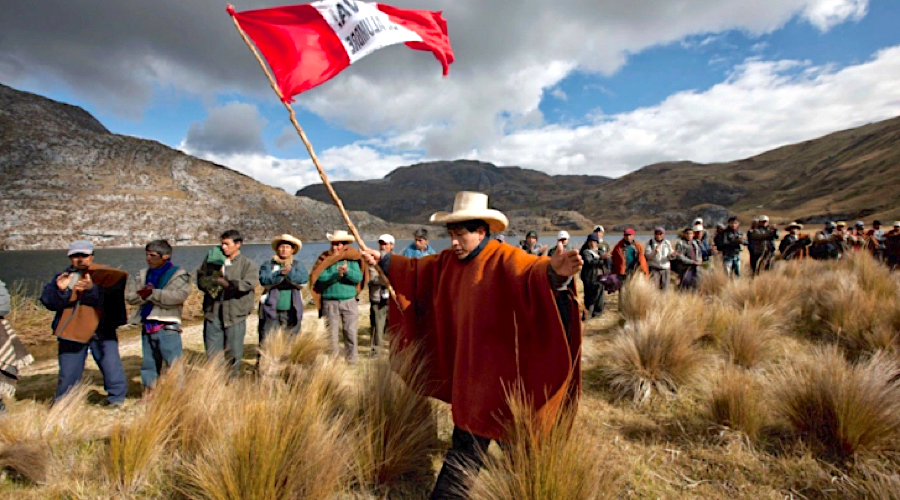
Newmont walked away from the $5bn Conga copper-gold project in Peru in 2016, due to relentless community opposition. (Image: Screenshot via YouTube.)
A move towards resource expropriation, tax and royalty increases, as well as demands for local participation in companies’ ownership, all resource nationalism components, continue to increase, with Latin America taking centre stage, a new study shows.
The consultancy identified 66 countries out of the 198 included in the resource nationalism index (RNI), or 33% of them, that have tightened the grip on their riches since 2017.
Latin America is the jurisdiction where risks of expropriation and taxes hikes have increased the most in the past four years
Latin America is the jurisdiction where risks of expropriation and taxes hikes have increased the most, the study says. Mexico stands out as seeing the nation where the risks have climbed the most, driven by López Obrador administration’s nationalist agenda that wields community and environmental arguments as justification for greater state involvement in the extractive sector, Verisk Maplecroft says.
Mexico’s situation is indicative of a wider regional trend affecting miners and energy firms in the region. South America’s three largest economies, Brazil, Argentina and Colombia are also experiencing substantial negative shifts in the index, while the once stable mining destinations of Chile and Peru are in the midst of political changes that threaten to alter the operating environment for the industry.
Copper prices have soared to record highs this year, handing unions in the two largest producers of the metal — Chile and Peru — additional leverage. The price rally has also ratcheted up tensions in labour negotiations and put pressure on global supply of the red metal.
Verisk Maplecroft’s RNI tracks incidents of direct expropriation and nationalization. The highest scores go to cases where there hasn’t been adequate compensation, no compensation, or in which a government hasn’t paid an award to a company following arbitration.
The ten highest risk countries in the latest edition of the index are Venezuela, Tanzania, Mexico, PNG, Zambia, Russia, North Korea, Kazakhstan, DRC and Zimbabwe.
The motive behind direct expropriation could be short-term political gain or a genuine attempt to save a vital but ailing industry to support the national interest. “The adequacy of compensation is the key factor from a business perspective,” the consultancy says.
Politics and community pressure
In Latin America, the push to gain greater benefit from natural resources generally hinges on two factors. In Mexico and Argentina, the main driving force is ideology, while in Colombia and Chile pressure comes from communities — both those hosting mining projects and civil society.
“While the traditional bastions of stability for Latin America’s mining investors are not yet crumbling, they appear to be joining their regional peers on the path of greater resource nationalism,” the report reads. “Only time will tell how far each one goes down this road.”
In Africa, motivations are much more diverse. The interventionism seen in Liberia and Mauritania is driven by structural governance shortcomings, not nationalist sentiment, Verisk Maplecroft points out.
The line between resource nationalism and legitimate national interest isn’t always easy to draw, and this can exacerbate tensions.
What is key for miners, according to the report, is to detect the signals early on, so that companies can adapt their investment strategies and exploration portfolios to mitigate future exposure to nationalism trends.
By doing so, the consultancy concludes, companies can also prioritize
investment in jurisdictions where they can be part of the solution.
They can work with local stakeholders to find a balance between
community needs and industry profitability to secure long-term social
license to operate.

No comments:
Post a Comment